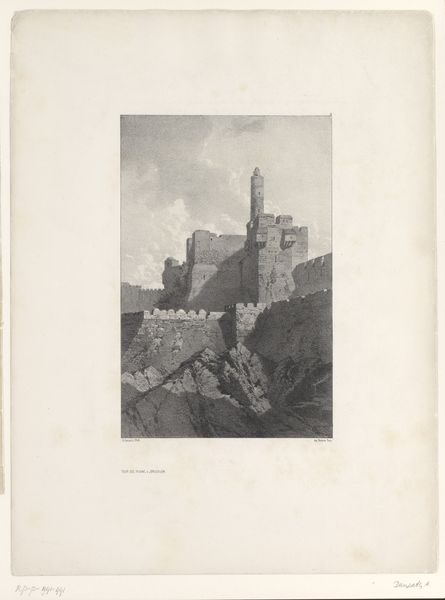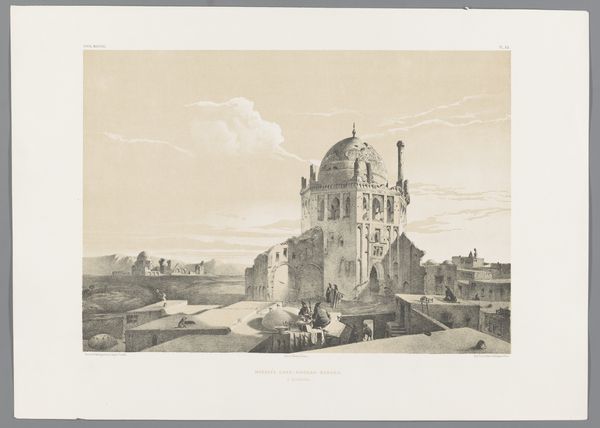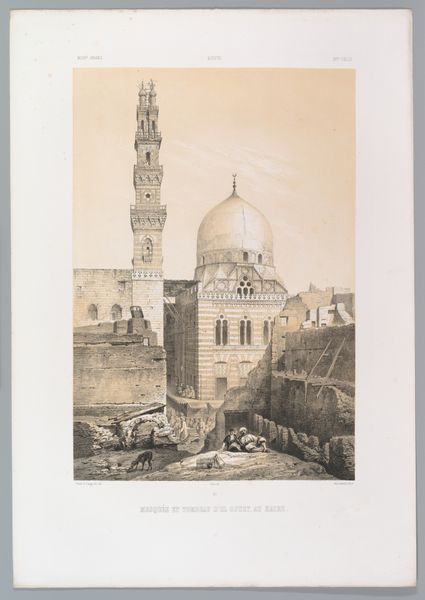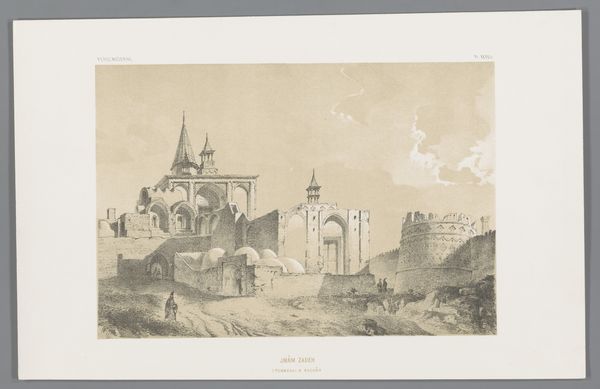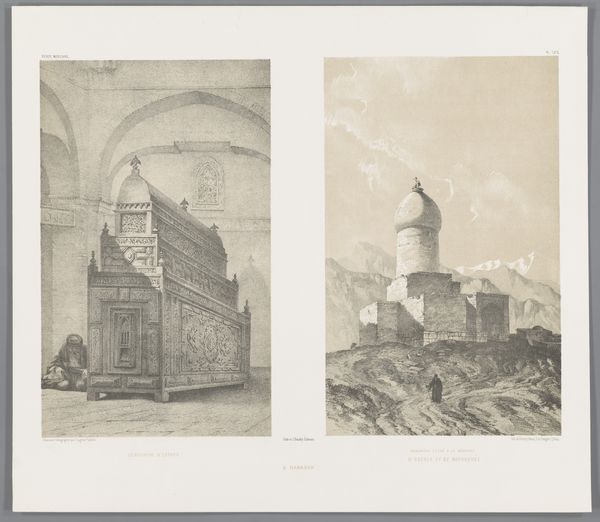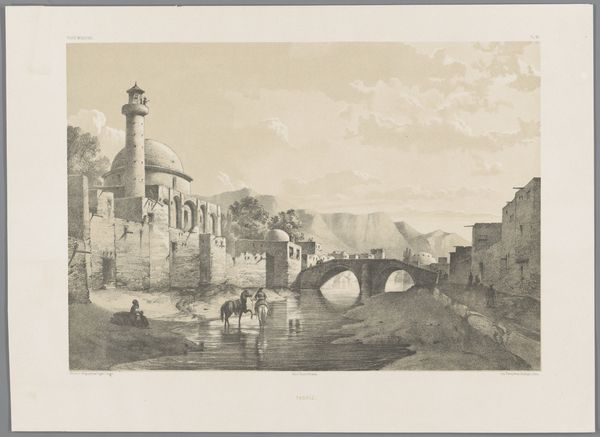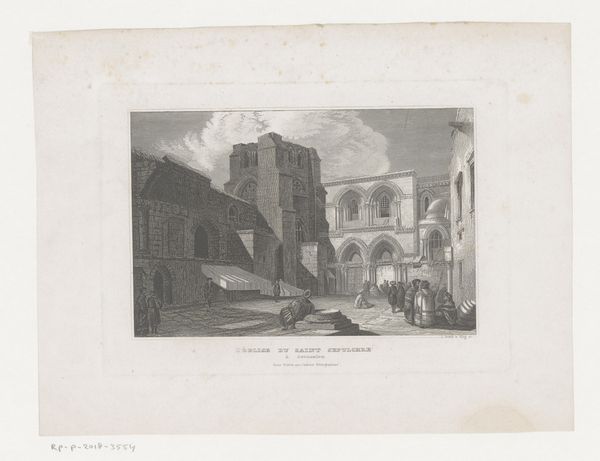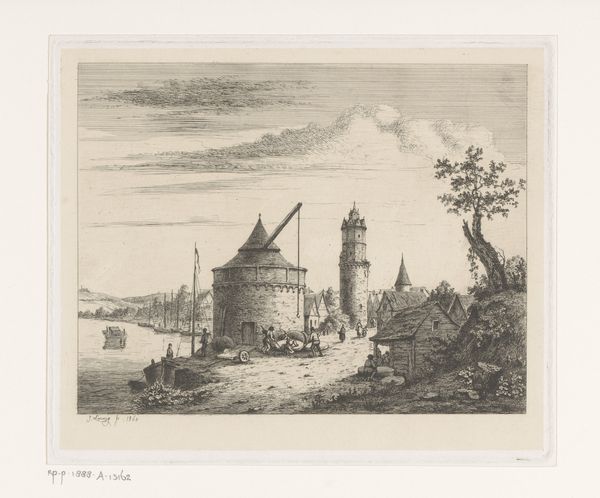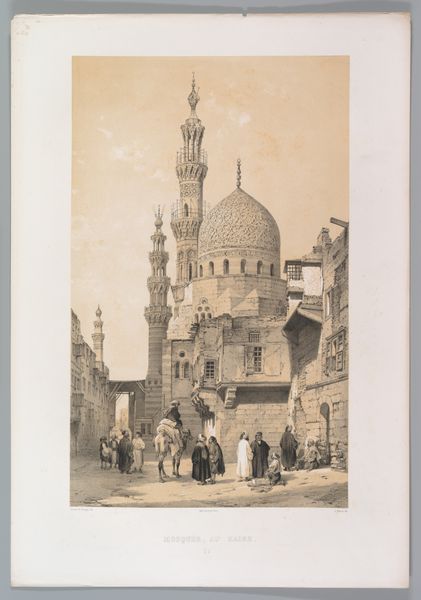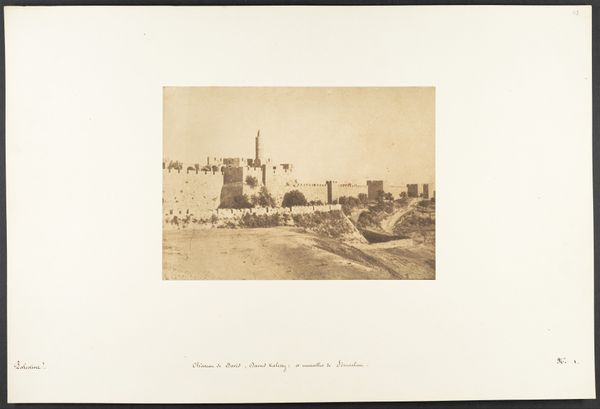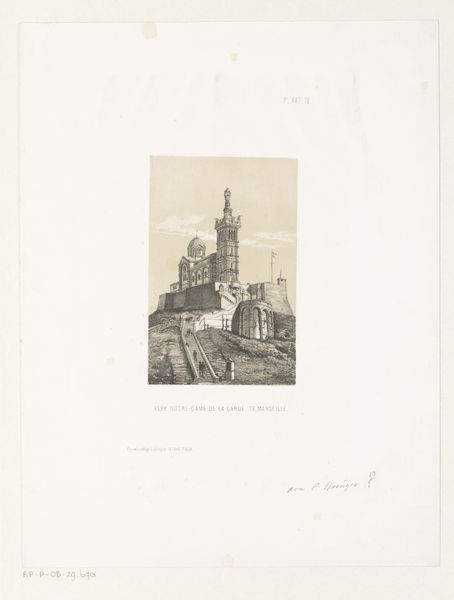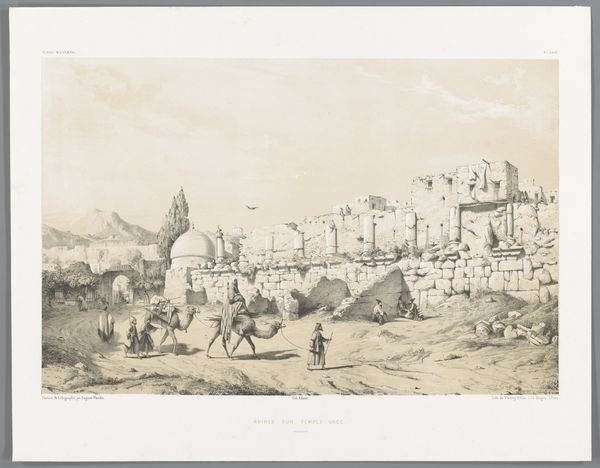
print, paper, engraving
#
16_19th-century
# print
#
landscape
#
paper
#
romanticism
#
19th century
#
cityscape
#
islamic-art
#
engraving
Dimensions: height 298 mm, width 230 mm
Copyright: Rijks Museum: Open Domain
Editor: This is "Zicht op de Grote Moskee van Algiers" by Adrien Dauzats, from 1844. It's a print on paper. It’s so detailed. I’m really struck by the starkness of it and the heavy fortifications. What do you see in this piece? Curator: I see more than just a landscape. Dauzats' work must be understood in the context of French colonialism in Algeria. The detailed depiction of the mosque, almost like a military survey, hints at the power dynamics at play. Consider who this image was intended for – likely a European audience. Editor: So you are saying it’s more about power than architecture? Curator: Absolutely. Romanticism often idealized the “Orient,” but here, the artistic gaze reinforces colonial ambitions. Dauzats' image isn't simply documenting; it's framing a narrative where Europe, by extension, could claim a sort of dominion over the region, presenting the "Orient" for consumption. Do you notice how the architecture appears almost impenetrable? Editor: Yes, the structure looks incredibly fortified. Almost like a warning? Curator: Perhaps, or a statement of conquest. This work could promote specific ideas on identity, or even nationalism through an understanding of place, race and politics in the 19th century. By creating distance, both physical and cultural, such images justify colonial policies. Editor: Wow, I never considered the power dynamics inherent in just depicting a place. I was so focused on the technical skill. Curator: It's crucial to ask, "Who benefits from this representation?" It invites us to question the relationship between art, power, and representation. Editor: That's really given me a new perspective. It's much more complex than just a pretty cityscape. Curator: Exactly! And by interrogating these historical contexts, we engage more meaningfully with art today.
Comments
No comments
Be the first to comment and join the conversation on the ultimate creative platform.
